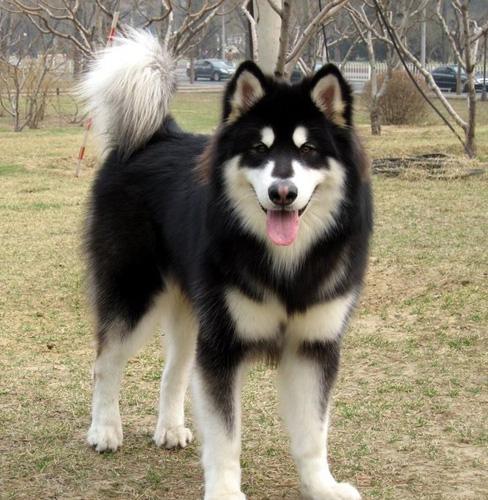Alaskan Malamute
IUCN
LCBasic Information
Scientific classification
- name:Alaskan Malamute
- Scientific Name:
- Outline:Carnivora
- Family:Canidae
Vital signs
- length:65cm
- Weight:50-70kg
- lifetime:10-20year
Feature
One of the world's famous "non-aggressive dog breeds"
Distribution and Habitat
Alaskan Malamutes are mainly distributed in the Americas, Alaska in the United States, and northern Asia, and are loved as pet dogs all over the world.
Appearance
The head is broad, with triangular ears that stand erect when alert. The ears are wide apart, erect and turned back, brown in color, and of moderate size. The eyes are almond-shaped and slanted. The muzzle is neither long and prominent nor short and thick. The chest is thick. The coat is dense, with sufficient length to protect the soft undercoat. The Alaskan Malamute comes in a variety of colors, such as gray, black and white, and reddish brown.
Details
The Alaskan Malamute is one of the oldest polar sled dogs. Its name comes from a tribe called Malamute of the Inuit people. This tribe lives on the shore of Kotzebue in western Alaska. Adult Alaskan Malamutes have a quiet and elegant temperament and are very loyal to their owners. They are the eldest brother among the three stupid sled dogs.

Alaskan sled dogs can be found in the records of the earliest North American immigrants. Before Alaska became part of the United States, the area was called Alashak or Alyeska, which translates to "vast land". This is the name given to it by the Russians who discovered the area. This dog is different from other dog breeds in Alaska. It has strong limbs and well-developed muscles. It is bred for endurance rather than speed, because its main purpose is to pull sleds.
Due to the interbreeding with imported dog breeds, the original native dog breeds were mixed with the genes of various foreign dogs, and the traditional purebred Alaskan sled dogs were almost completely extinct.
In the first 20 years of the 20th century, with the popularity of dog sled racing in North America, Americans realized the need to regain the Alaskan sled dog, a native sled dog breed. In 1926, American sled dog enthusiasts began to devote themselves to systematically breeding purebred Alaskan sled dogs based on native sled dogs and huskies. After nearly ten years of breeding and development, the American Kennel Club (AKC) officially recognized the Alaskan Malamute in 1935.
In 1996, it was recognized by the World Canine Federation (FCI) and became the FCI Alaskan Malamute standard.
As one of the world's famous "non-aggressive dog breeds", the Alaskan Malamute has a very good temper. Of course, the "non-aggressive" we are talking about here does not mean that this kind of dog is absolutely not aggressive. When they are severely stimulated or beaten for a long time, they may show aggression, but this is also their self-protection ability, just like a person with a good personality will get angry when he is pushed into a corner.
Alaskan sled dogs that do not exercise enough may be more prone to obesity than other dogs due to their appetite. Therefore, if they cannot exercise enough, you must pay attention to the amount of food you feed them. You can use "slow food bowls" and "food leaking balls" to increase the fun of feeding and slow down their eating speed. You can also prepare some knotted toys to distract them.
Protect wild animals and eliminate game.
Maintaining ecological balance is everyone's responsibility!








